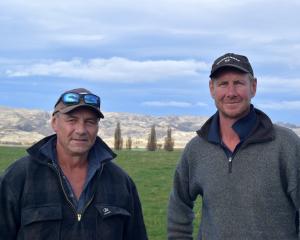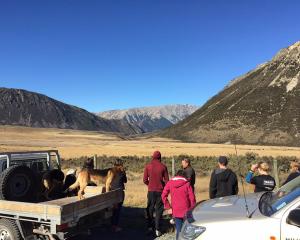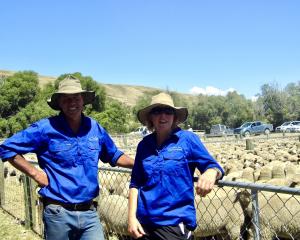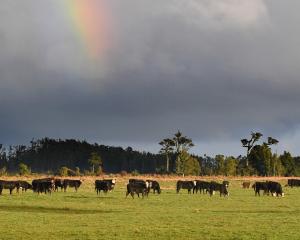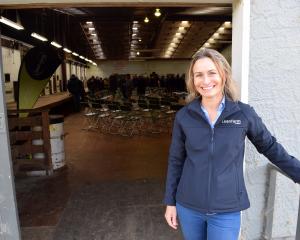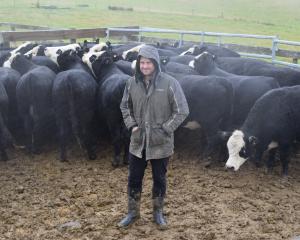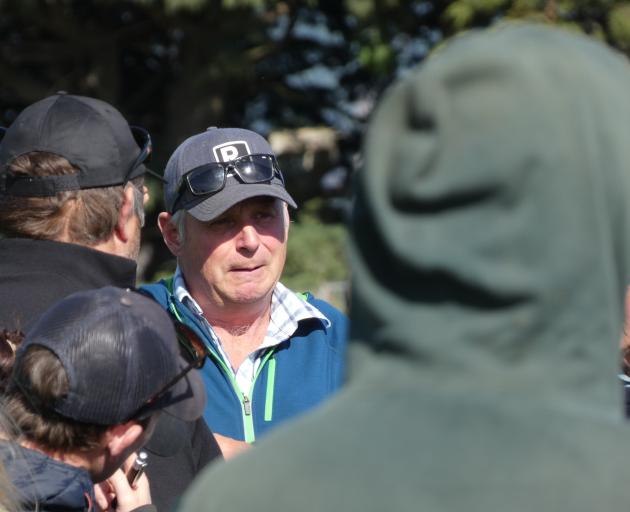
Co-owner David Harper showed about 70 farmers the state of winter feed crops and paddocks which at first glance had a green tinge, yet not a single animal could be seen.
The farmers were attending Beef + Lamb NZ’s (B+LNZ) Farming for Profit: When Will it Rain field day at Windwhistle’s Tui Estate
Mr Harper said looks could be deceiving and the dry season had been stressful for the team.
"I’ve been farming here at the gorge for well over 20 years and this is the first time we’ve had to destock. While it might look green as you go up and down here, and remember we are in a goldfish bowl here, it’s relative. Our stocking rate is high and when it hits us, it hits us hard and costs us."
Just over 700ha includes 100ha owned by the business at the bottom end of the Zig Zag Road. The rest is four lease blocks including 60ha at Tui Creek on the boundary of Terrace Downs resort with land extending to the gorge.
Braided Waters is owned in partnership with David and Millie Harper and the Bogoievski family and managed by Angus and Nicole Lang.
In a typical season dairy grazing is a major income earner for the partnership and this year about 580 1-year-olds and a similar number of 2-year-old cattle were due to leave in May. About 130 heifers either bred or bought in the autumn are put to calf and once they are reared the heifers go to the works before February.
Just over 1200 ewes are run on the blocks with about 4000 lambs finished on chicory through the Lumina Lamb programme. About 600 deer were finished this year and other animals were also traded.
Mr Lang said they started to get reasonably dry in early January and had a lot of hay shut up at that stage.
"We went away on holiday and came back and things weren’t looking quite as good."
Stock were shifted to where there was a hay stack to get them through the next two weeks, but the rain never arrived.
"We need to be growing 50kg a day and I would say we were probably growing around 20kg then. I wasn’t really monitoring paddocks that closely at that stage . Then it got to early February and I said to David ‘I can’t really see a way out of this’."
Mr Harper said he initially pushed back and put pressure on to make sure they made the right decision.
Then they made the call to bring in MacFarlane Rural Business farm management consultant Mark Everest and it was good to share the load, he said.
"The stress was on everyone on the chain, not just one person and if you share it that way it’s a lot easier to manage. Once we made that call we sort of moved on and got on with it really. That thing just affects everybody and it’s really real."
With Mr Everest they put out a plan to introduce pad feeding of silage and straw to the rising 2-year-old heifers over the next few weeks.
"That doesn’t take a rocket scientist to work out that’s not very profitable," Mr Lang said.
With the cost of this feed outweighing the grazing return, they made the decision in late January to return the cattle.
Mr Lang said most of the dairy farmers were expecting the phone call as they knew rain had not arrived.
"We made the call to get the stock off farm. If we’d left it any longer it would’ve been a real struggle."
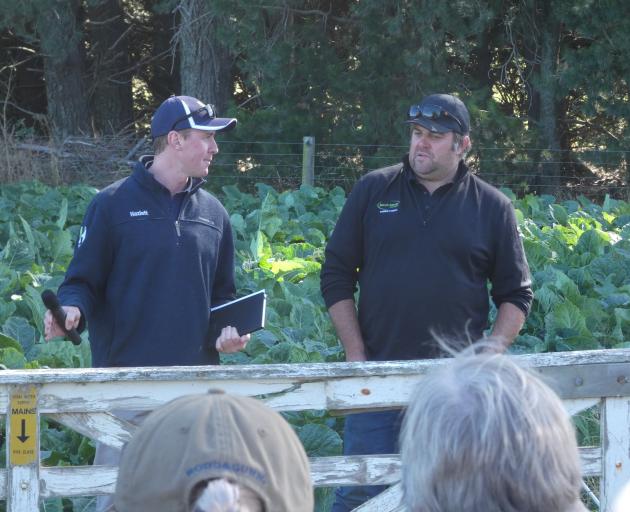
"Effectively we halved our stocking rate, so we went from 8600 stock units roughly to just above 4000. Like I said we need to be growing 50kg and a couple of weeks ago we got down to 5kg. (In late March) we were at 17kg so we aren’t really gaining anything I suppose."
Mr Harper said Mr Lang had done a good job communicating with the dairy farmers.
"If we left it another week it would have been really hard. There’s no flexibility in this dairy grazing system, but the stock hadn’t lost condition and left here in good condition so they could take them on and it didn’t cost them in the condition of their cows which is the important thing."
The much-needed decision was still challenging, he said.
"For us it was a big cashflow loss to lose all those animals for that last two months. With our farm system we have a huge autumn demand because we have young animals coming on and we normally buy deer and had to put that off. So it has costs us and from now on we have to look at when we start buying in deer and what the margin is with them."
The 23 cows left from a 50-odd mob were reasonably self-sustaining.
Overall, the ewes averaged 2.75 after condition scoring with the bottom end to be given some grain.
Mr Harper said the focus was on making sure stock were not compromised.
Getting rid of the cows was a cashflow hit, but they needed to look after the ewes to protect next year’s income. Ewe numbers were down in an effort to balance everything out, he said.
Winter crops over about 80ha in fodder beet, kale and swedes went in from October.
On the lee side of shelter belts protecting them from nor’westers near the road, the crops look "rosy", but quickly thin out. In other parts of the farm they failed to strike.
The budget yield for fodder beet of 20 tonnes/ha is closer to 15 tonnes/ha.
This was 5 tonnes/ha was short of what was needed under an intensive system, Mr Lang said.
On one stockless paddock of new grass it had been 36 days since it had been grazed.
The Braided Waters team is now in recovery phase.
Mr Lang said the plan at the moment while there was a little growth was to feed a little silage to dairy calves for graziers.
Then they would let the covers pick up in pastures and make the most of any growth, he said.
"If it keeps staying cold and there’s no rain the tap’s going to turn off pretty quick. Like I said, the plan is to keep feeding out, including a little bit of barley to those ewes and the next ladder will be whether or not we have to dive into some of this winter feed earlier than planned."
He said the challenge ahead was getting through winter and to set themselves up for spring as best as they could to generate some income.
"It’s important to monitor the ewes and the cattle stock we do have as it’s pretty common knowledge in a situation like this you don’t want the problem now to be hanging around next year. We will take the opportunity while we can to keep the condition on the ewes."



